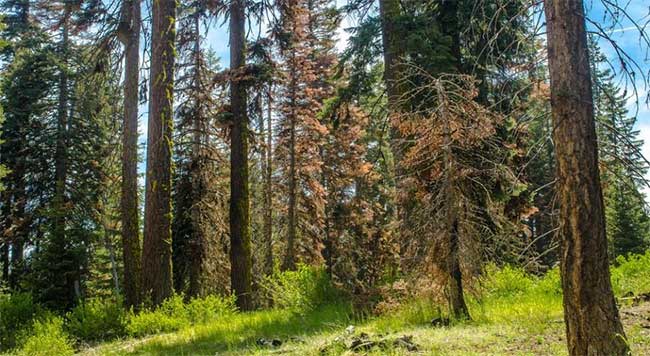Some plants make drought worse
A new analysis suggests that some plants make drought worse.
The loss of plants and plants can cause many negative effects on ecological health. Usually plants and plants help mitigate the damage caused by extreme weather. But according to new research, the effect of plants on weather conditions depends on the physiology of the plant species involved.
According to a new study - published in PNAS - some plants use precious groundwater to cool themselves, making drought worse.
William Anderegg, a biologist at the University of Utah, said: 'We show that plant physiology is very important. How plants take, transport and evaporate water can affect important social events, such as severe droughts, that can affect people and cities. '

Plants can affect the atmosphere and can affect the weather.
The previous studies of Anderegg mainly focused on the components of the forest and the physiology of the dominant species which deal with wet and dry conditions. Instead, the latest study focuses on the impact of different plant characteristics on drought.
Anderegg said: 'We have long known plants can affect the atmosphere and can affect the weather'.
The weather is largely governed by the movement of water and heat in the lower atmosphere , and the trees and forests in general - taking water from the soil and emitting steam into the air - can have a tremendous impact on those This feature.
The transpiration of a dense forest can cause precipitation. When the forest layer is cut down, drought conditions can increase. The link between forests and trees and climate as well as weather can explain why forest health in the West Bank can affect the health of forests in the East Coast and vice versa.
In the new study, Anderegg and colleagues studied the interplay between forest characteristics and weather conditions at 40 locations around the world. The device records the movement of heat, water and carbon at each location. The scientists also studied the diversity of plants around the equipment at each location.
Scientists analyzed the data to isolate the characteristics of the plant in relation to the severity of drought. Researchers found that plants with the highest rates of gas exchange and water transport through leaves often make the drought situation worse.
Plants can transport gas and water faster to keep themselves cool, but that comes at the cost of reducing groundwater.
Anderegg said: 'Eventually, the weather will be hotter and drier in the environment where these plants exist than other plants.'
Drought-prone places often have many drought-tolerant plants, but in some places, plants need lots of water - like the Mediterranean oak - which can exacerbate drought and make life less drought resistant species are more difficult.
Anderegg said: ' Unable to explain this key physiology of plants will provide less accurate predictions about climate change for drought in many areas. Just because this year we have good water in the US and Utah does not mean we have escaped difficulties. We need to remember that we will have more droughts in the future. '
- Scarcity of food has 'super trees'
- The new active ingredient protects plants from drought, despite climate change
- Stress, anxiety can make allergies worse
- The highest tree species in the world are threatened
- Genetically modified plants withstand drought
- Carbohydrates help plants fight drought
- A few facts about anti-drought in plants
- Lack of vitamin D makes asthma worse
- Canada creates good drought tolerant plants
- Human anti-drought weapons are here
- Drought proof by biotechnology
- More than half of America has suffered from drought
 Is the magnetic North Pole shift dangerous to humanity?
Is the magnetic North Pole shift dangerous to humanity? Washington legalizes the recycling of human bodies into fertilizer
Washington legalizes the recycling of human bodies into fertilizer Lightning stone - the mysterious guest
Lightning stone - the mysterious guest Stunned by the mysterious sunset, strange appearance
Stunned by the mysterious sunset, strange appearance Top 5 plants with special abilities
Top 5 plants with special abilities  Mushrooms - The silent 'architects' of nature
Mushrooms - The silent 'architects' of nature  Technology of growing plants in the dark
Technology of growing plants in the dark  We are about to understand the language of trees.
We are about to understand the language of trees.  Can animals heal themselves?
Can animals heal themselves?  Do fake plants make us feel good?
Do fake plants make us feel good? 